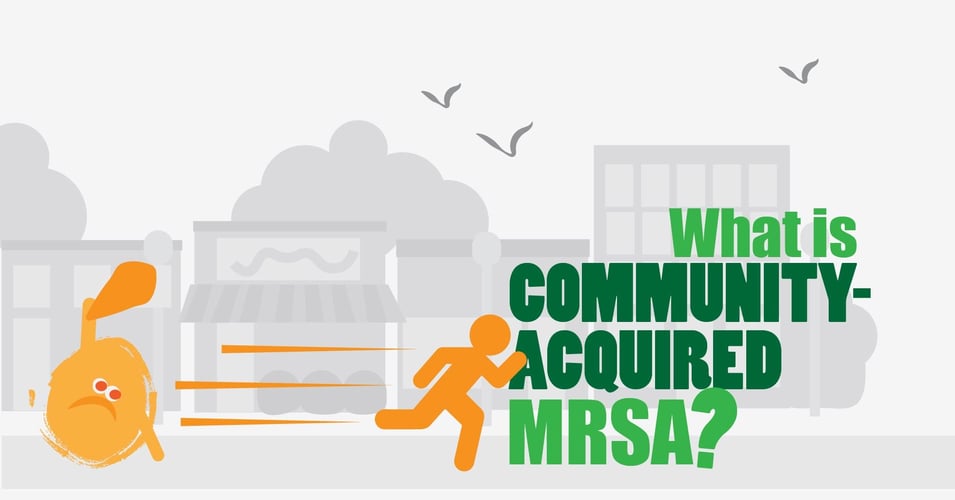5 Facts About MRSA You Need to Know

To recognize MRSA Awareness Month through October, here are 5 critical facts about MRSA that everyone needs to know.
1. MRSA is a drug-resistant form of a very common bacteria (one you are likely to have on your own skin.)
MRSA stands for Methicillin-resistant Staphylococcus aureus S. aureus is found in the noses or on the skin up to 30% of healthy individuals. Through the use of antibiotics in healthcare settings, S. aureus developed a resistance to a class of antibiotics and became MRSA.
2. The drugs MRSA is resistant to are the most commonly used antibiotics.
Methicillin is one of a group of infection treatments called beta-lactam antibiotics. These include all the antibiotics you may be familiar with such as penicillin, amoxicilin, oxacillin, and methicillin. Because it resists this class of antibiotics, more aggressive antibiotics are needed to treat the infection.
3. There were over 323,000 cases of MRSA in hospitals patients in 2017, leading to about 10,600 deaths.
MRSA can lead to extended hospitals stays and slower healing, but it can also cause death. If a MRSA infection cannot be treated with antibiotics or removal of infected tissue, it continues to invade a patient's body and can lead to fatal organ failure.
4. MRSA can also be found outside of healthcare settings.
Community-acquired MRSA, or CA-MRSA, can lead to infections outside of healthcare settings. CA-MRSA outbreaks can occur in locker rooms, unsanitary or crowded living quarters, or long-term nursing homes. These infections can be very difficult to treat, even though most of the infected patients are otherwise healthy.
5. You can help prevent MRSA.
You can help prevent the spread of MRSA by washing your hands often with warm water and soap, for at least 30 seconds. You can prevent being infected with MRSA or CA-MRSA by making sure to keep open wounds covered and clean. If you use a public locker room or play a contact sport, never share towels, clothing, or toiletries.
To avoid the creation of MRSA, always follow your doctor's instructions about antibiotic use. Do not take antibiotics for a virus, and always take your entire dose, even if you feel better halfway through.
New recommendations, nursing processes and cleaning protocols from the CDC did reduce the cases of hospital onset MRSA from 2013 to 2019 but with the COVID-19 pandemic in 2020 the number began to climb again by 13%. However the CA-MRSA cases fell drastically in the same year for a lower total. To learn more about MRSA Awareness Month and stay tune for more posts.
Editor's Note: This post was originally published in October 2015 and has been updated for freshness, accuracy and comprehensiveness.
![EOScu Logo - Dark - Outlined [07182023]-01](https://blog.eoscu.com/hubfs/Eoscu_June2024/Images/EOScu%20Logo%20-%20Dark%20-%20Outlined%20%5B07182023%5D-01.svg)

![[infographic] Most Touched and Most Contaminated Surfaces in a Patient Room Download and share!](https://no-cache.hubspot.com/cta/default/216314/interactive-178379385229.png)



